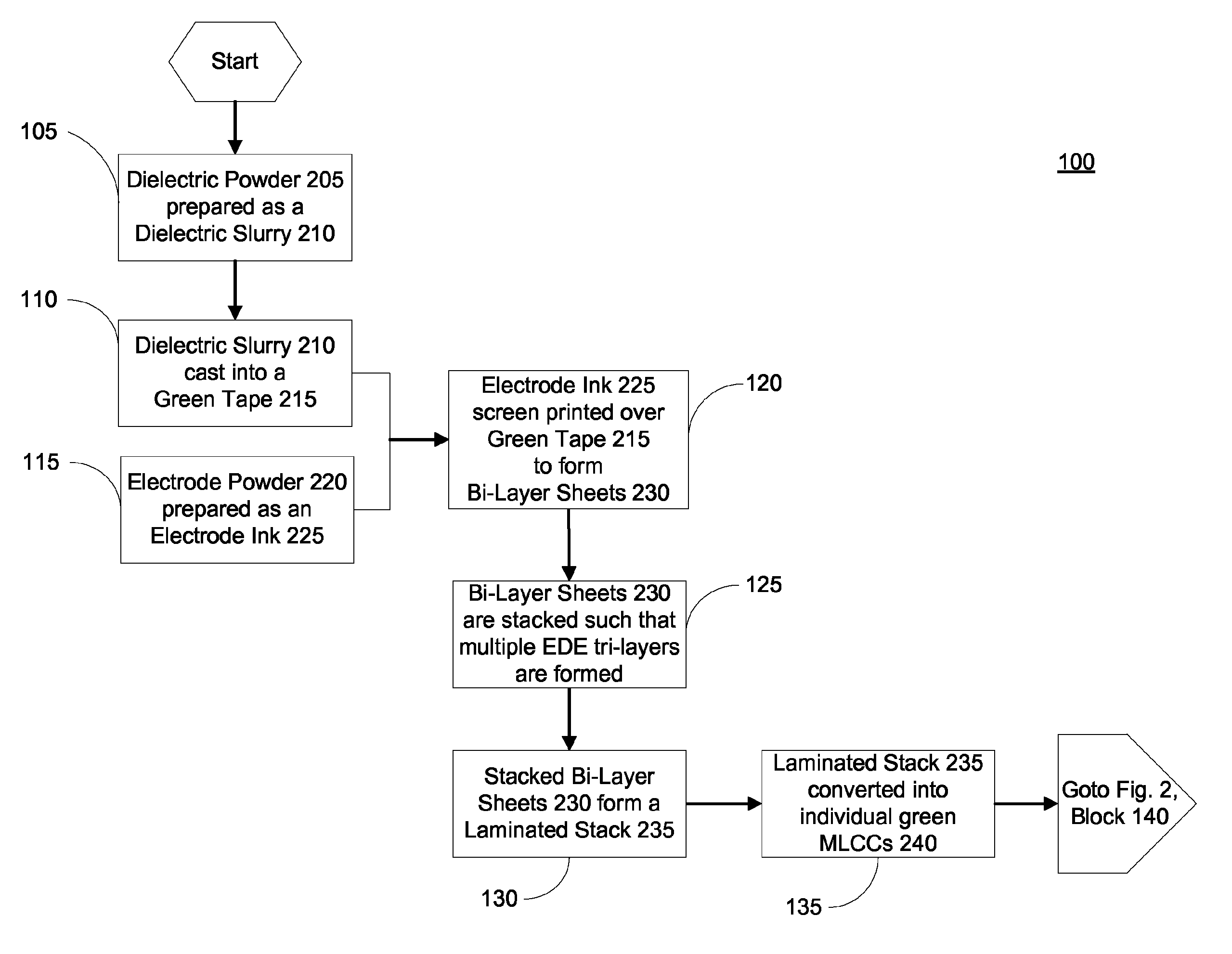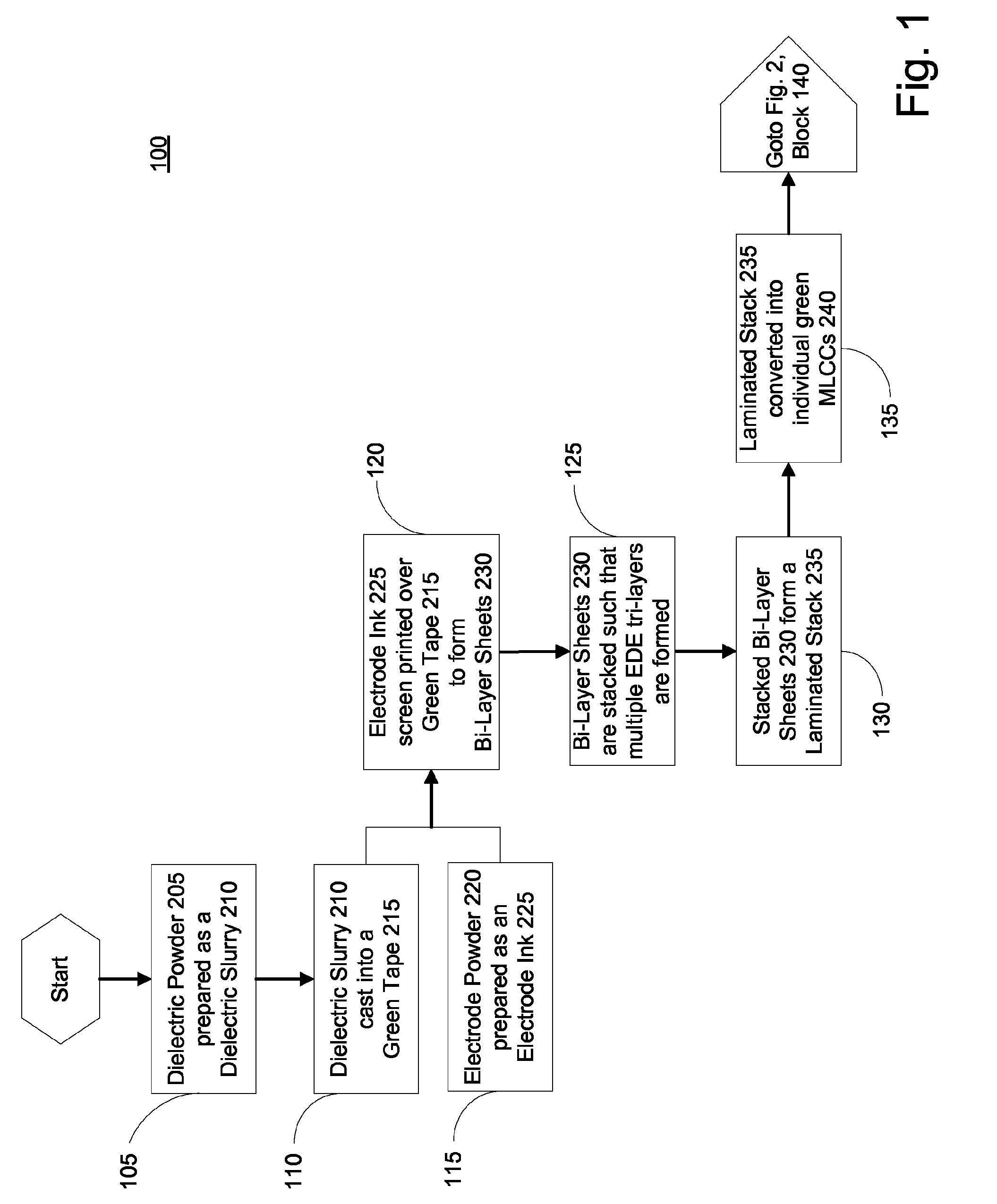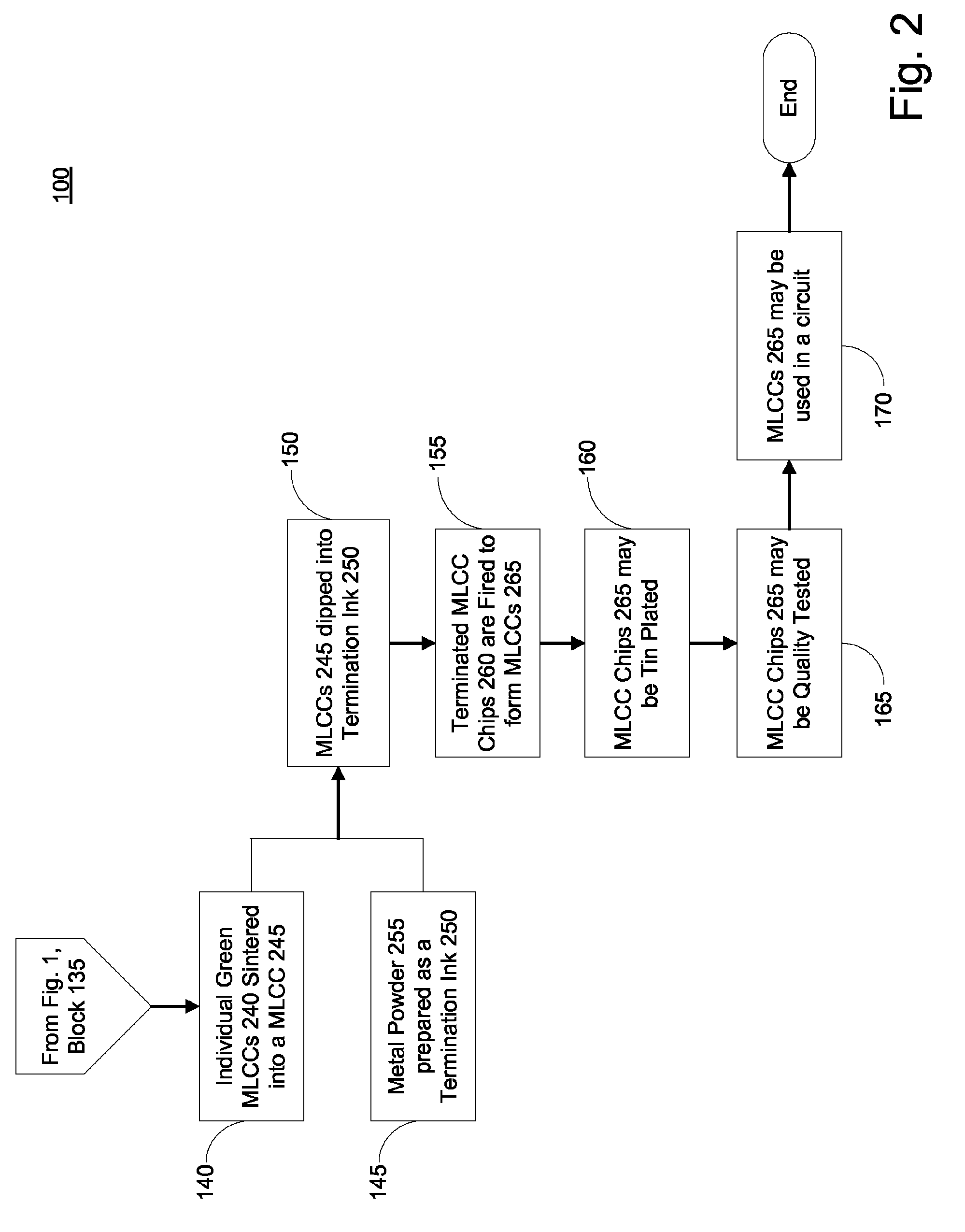Methods for manufacture a capacitor with three-dimensional high surface area electrodes
a capacitor and high surface area technology, applied in the direction of variable capacitors, fixed capacitors, fixed capacitor details, etc., can solve the problems of not having headroom that comes at a premium, and limiting the area footprint to a minimum, so as to improve the capacitance efficiency, reduce the space footprint, and increase the effective area of an electrode surface
- Summary
- Abstract
- Description
- Claims
- Application Information
AI Technical Summary
Benefits of technology
Problems solved by technology
Method used
Image
Examples
Embodiment Construction
[0024]The presently disclosed embodiments, as well as features and aspects thereof, are directed towards providing a capacitor, and methods of manufacture, for improving capacitance efficiency which results from increasing the effective area of an electrode surface. More specifically, an improved “three-dimensional” capacitor may be constructed with electrode layers having three-dimensional aspects at the point of interface with a dielectric. Advantageously, embodiments of a three-dimensional capacitor drastically reduce the space footprint that is required in a circuit to accommodate the capacitor, when compared to current capacitor designs known to one of ordinary skill in the art. Increased capacitance density can be realized without necessarily requiring high k (high constant) dielectric materials, additional “electrode-dielectric-electrode” arrangements in an ever increasing stack, or serially stringing together multiple capacitors.
[0025]Exemplary embodiments of a three-dimensi...
PUM
| Property | Measurement | Unit |
|---|---|---|
| thickness | aaaaa | aaaaa |
| size | aaaaa | aaaaa |
| size | aaaaa | aaaaa |
Abstract
Description
Claims
Application Information
 Login to View More
Login to View More - R&D
- Intellectual Property
- Life Sciences
- Materials
- Tech Scout
- Unparalleled Data Quality
- Higher Quality Content
- 60% Fewer Hallucinations
Browse by: Latest US Patents, China's latest patents, Technical Efficacy Thesaurus, Application Domain, Technology Topic, Popular Technical Reports.
© 2025 PatSnap. All rights reserved.Legal|Privacy policy|Modern Slavery Act Transparency Statement|Sitemap|About US| Contact US: help@patsnap.com



